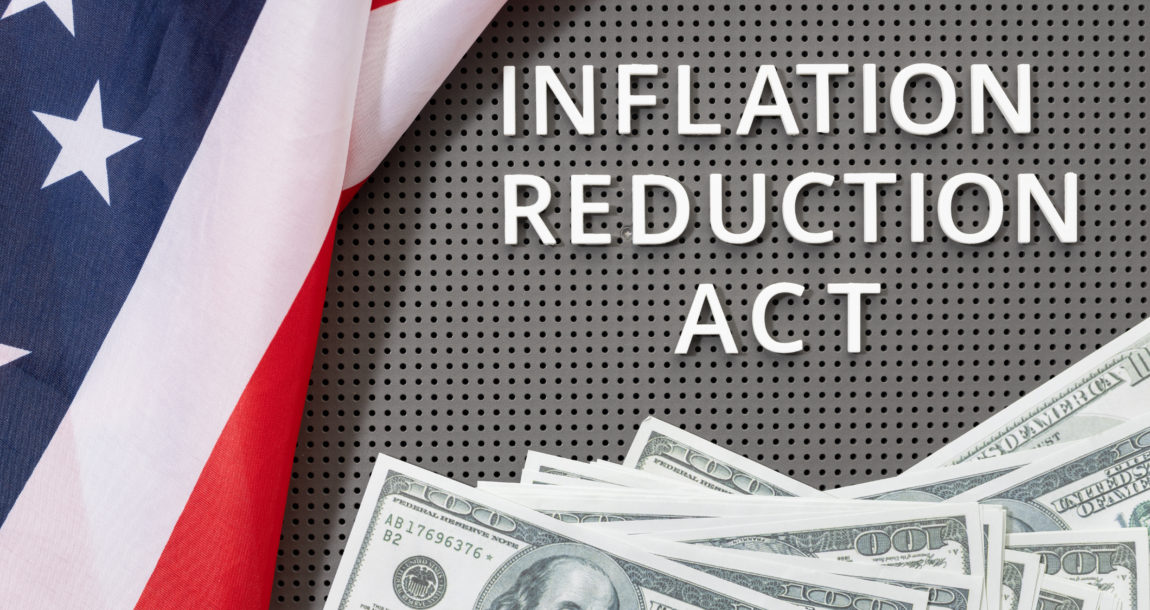Drug manufacturers will have few alternatives in negotiating Medicare rates

The Inflation Reduction Act gives the U.S. Department of Health and Human Services the authority to negotiate the cost of some prescription drugs covered under Medicare Part D. But although it’s called negotiation, drug manufacturers may find themselves at a distinct disadvantage if they don’t agree with HHS.
That was one of the highlights of a recent Manatt Health webinar on the aspects of the IRA on Medicare prescription drug costs.
The alternatives to a drug manufacturer declining to agree with HHS on price “can be pretty draconian,” said Ian Spatz, Manatt Health senior advisor.
The law establishes an upper limit – or a “maximum fair price” - on what HHS can negotiate.
A drug manufacturer has three choices when presented with the HHS’ final offer of a maximum fair price, Spatz said.
- Accept the price offered by HHS.
- Decline the price and pay an excise tax. The tax begins at a 65% rate on all product sales in the U.S., rising to 95% depending on the length of time that the manufacturer does not comply with the price.
- Decline the price and withdraw all the manufacturer’s products from Medicare and Medicaid - not only the products subject to negotiation.
In addition to HHS being able to strong-arm drug manufacturers to negotiate prices, there is no judicial review of key actions the department might take regarding these negotiations, Spatz said.
“No judicial review leads to questions – what if HHS doesn’t follow the rules as laid out?” he said. “It’s not clear whether anyone can challenge their decisions not to follow the law exactly as it is written.”
The ability to negotiate prices of some Medicare drugs is the first time the federal government will directly regulate the price of prescription drugs in Medicare and, indirectly, limit the ability of drug manufacturers to increase wholesale prices, Spatz said. At the same time, the legislation makes major changes to the Medicare Part D prescription drug benefit. Those changes include:
- Allowing the government to regulate the price of certain drugs under Medicare for the first time under the Drug Price Negotiation Program, through which the government must establish a maximum fair price for certain drugs.
- - Requiring pharmaceutical manufacturers to pay rebates to Medicare if they increase list prices faster than the rate of inflation.
- Overhauling the Medicare Part D benefit by creating an annual $2,000 out-of-pocket cap on Part D prescription drug spending by beneficiaries.
- Capping insulin costs for Medicare enrollees at $35 per month.
Drug price negotiation
Spatz outlined the steps for negotiating drug prices under the IRA. The first step is for HHS to establish a maximum fair price for the selected drugs. The maximum fair price can be no more than the lesser of either:
- Part B drug’s average sales price for the year prior to the selected drug publication date, or a Part D drug’s price net of all price concession, using the most recent year for which data is available, or
- The percentage of the drug’s past nonfederal average manufacturers price. For drugs first selected in 2026, the law uses 2021 prices, increased by inflation. For drugs first selected in 2027 and following years, the law uses the lesser of 2021’s nonfederal average manufacturers price increased by inflation, or the nonfederal average manufacturers price for the year prior to the selected drug publication date. The percentage by which that number is multiplied is based on the type of drug: 75% for “short-monopoly drugs” (approved less than 12 years ago), 65% for “extended-monopoly drugs” (approved between 12 and 15 years ago) and 40% for “long-monopoly drugs” (approved more than 16 years ago).
The remaining steps include:
- Each drug has a ceiling price that is tied to the drug’s historical pricing and other factors.
- The maximum fair price may be lower than the ceiling price. There is no limit on how low the maximum fair price may be.
- The maximum fair price will first apply in 2026 in Medicare Part D. Starting in 2028, it will apply to both Parts B and D.
How will HHS select the drugs that will be eligible for price negotiations? Spatz said HHS will have a two-step selection process.
Step 1: Establish list of qualifying single source drugs. On the selected date, HHS will identify all drugs with Medicare sales exceeding $200 million per year in a selected period of time that were approved by the Food and Drug Administration more than seven years ago (for small molecule drugs with no marketed generic) or were FDA licensed more than 11 years ago (for biologics with no marketed biosimilar). Orphan drugs and plasma-derived drugs and biologics are excluded from this list.
Step 2: Establish list of negotiation-eligible drugs. HHS will list from highest to lowest spending the 50 Part D qualifying single source drugs with the highest spending for the applicable year. This list will exclude drugs and biologics previously selected and exclude any small biotech drugs for 2026, 2027 and 2028. HHS then will list from highest to lowest spending the 50 Part B qualifying single source drugs with the highest spending for the Medicare spending reference period. This list also will exclude the drugs and biologics from the Part D list described previously.
The two lists will be combined and ranked again from highest to lowest spending. HHS then will select starting from the drug with the highest spending up to the number of drugs required for a particular year. Ten drugs will be selected for 2026, 15 for 2027, 15 for 2028 and 20 in subsequent years.
“HHS has no discretion on which drugs to pick. It will be done solely on numbers,” Spatz said.
The first list of 10 selected drugs will be published in September 2023 to take effect in 2026.
Inflation rebates
Inflation rebates are another pillar of the IRA regarding prescription drugs and Medicare, said Alexander Dworkowitz, Manatt Health partner.
The law mandates that manufacturers pay rebates to the Supplemental Medical Insurance trust fund if they increase the price of their Medicare Part B and Part D drugs faster than the rate of inflation.
Manufacturers are subject to civil monetary penalties for failure to pay rebates. In addition, there is no administrative or judicial review to determine the number of units subject to rebates, to determine whether a drug is subject to rebates, and the calculation of the rebate amount.
Susan Rupe is managing editor for InsuranceNewsNet. She formerly served as communications director for an insurance agents' association and was an award-winning newspaper reporter and editor. Contact her at [email protected]. Follow her on Twitter @INNsusan.
© Entire contents copyright 2022 by InsuranceNewsNet.com Inc. All rights reserved. No part of this article may be reprinted without the expressed written consent from InsuranceNewsNet.com.
Susan Rupe is managing editor for InsuranceNewsNet. She formerly served as communications director for an insurance agents' association and was an award-winning newspaper reporter and editor. Contact her at [email protected].





Study: small business insurance customer satisfaction rebounding
A move towards title protection exposes cracks in planner qualifications
Advisor News
- Global economic growth will moderate as the labor force shrinks
- Estate planning during the great wealth transfer
- Main Street families need trusted financial guidance to navigate the new Trump Accounts
- Are the holidays a good time to have a long-term care conversation?
- Gen X unsure whether they can catch up with retirement saving
More Advisor NewsAnnuity News
- Product understanding will drive the future of insurance
- Prudential launches FlexGuard 2.0 RILA
- Lincoln Financial Introduces First Capital Group ETF Strategy for Fixed Indexed Annuities
- Iowa defends Athene pension risk transfer deal in Lockheed Martin lawsuit
- Pension buy-in sales up, PRT sales down in mixed Q3, LIMRA reports
More Annuity NewsHealth/Employee Benefits News
Life Insurance News
- Product understanding will drive the future of insurance
- Nearly Half of Americans More Stressed Heading into 2026, Allianz Life Study Finds
- New York Life Investments Expands Active ETF Lineup With Launch of NYLI MacKay Muni Allocation ETF (MMMA)
- LTC riders: More education is needed, NAIFA president says
- Best’s Market Segment Report: AM Best Maintains Stable Outlook on Malaysia’s Non-Life Insurance Segment
More Life Insurance News